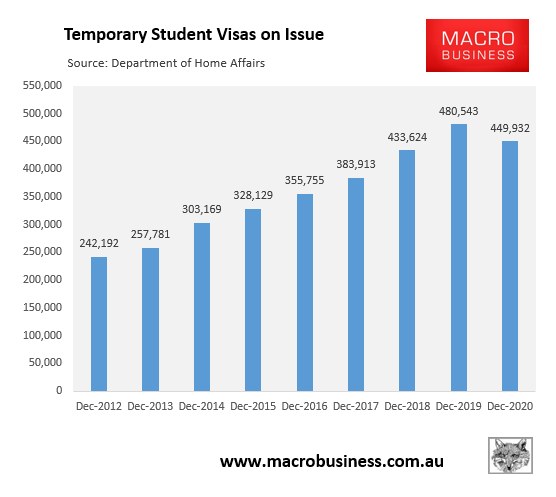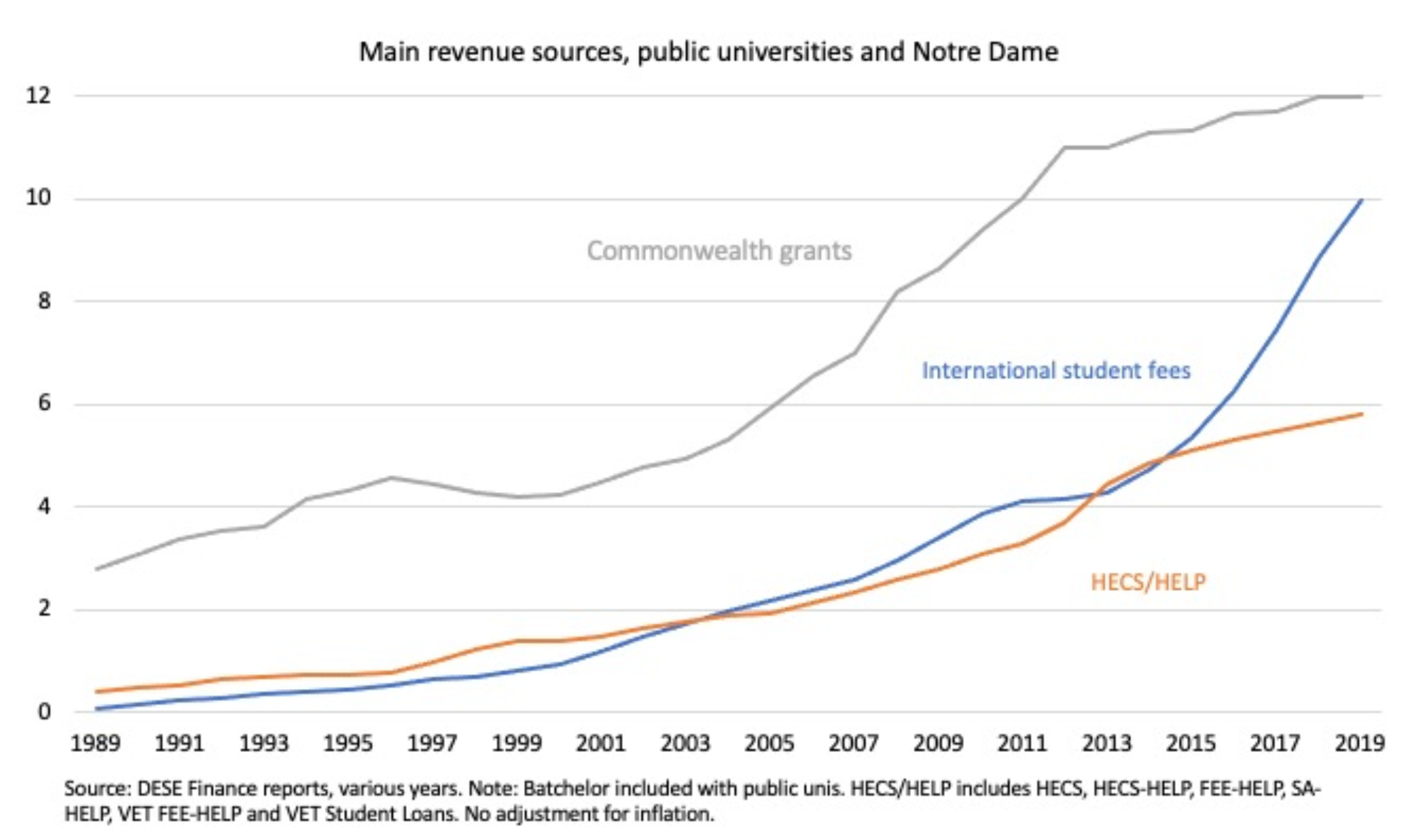Over the past year we have heard dire reports that the closure of Australia’s international border and the loss of international students would deal a death blow to our universities but cutting their fee income by billions.
Turns out that the university sector is doing just fine with many actually declaring surpluses during the pandemic, according to Times Higher Education.
The University of Melbourne’s preliminary financial results show a $180 billion surplus for 2020 – comprising an operating surplus of $8 million, with the rest coming from an appreciation in the value of long-term assets including endowments and investments.
Melbourne’s vice-chancellor, Duncan Maskell, attributed the surplus to “prudent financial management and the resilience of the university community”.
Monash University’s unaudited results also reported an operating surplus of $259 million, which vice-chancellor Margaret Gardner has attributed to “good work by many staff on all fronts”.
Other universities are also faring much better than expected. For example, the University of Adelaide in September revised its forecast of a $100 million revenue shortfall to $60 million. The University of Sydney similarly downgraded its predicted losses from $470 million to $184 million on the back of higher than expected domestic and international student enrolments.
Commenting on the better than expected outcomes, Federation University vice-chancellor Duncan Bentley basically admitted that Australia’s universities had ‘cried wolf’ over international students:
“It’s quite legitimate, given the exceptional circumstances, that people took a pessimistic view… They didn’t want, as quasi-public organisations, to be shown on the record to have grossly underestimated [the damage]. It’s quite legitimate for everyone to have [taken] a very conservative view, but it’s wonderful that we’ve been able to turn it around.”
It is worth pointing out that the number of student visas on issue at the end of 2020 was still the second highest on record, according to the Department of Home Affairs:

Thus, Australia’s universities are still ‘creaming it’ with respect to international student fees. And this comes on top of continuous growth in both domestic fee income and Commonwealth Government grants:
If universities are experiencing financial problems it is because of their own mismanagement. They should never have assumed that the exponential boom in international student fees was sustainable nor desirable, and they should have built up adequate reserves for when the inevitable pull-back arrived.
Instead, many universities spent the bounty on bloated administrations, white elephant buildings, and dubious research aimed purely at propelling themselves up the international rankings ladder so as to attract even more foreign students.
Now it is time for these universities to shift their focus back to educating domestic students, by lifting pedagogical standards and providing a quality educational experience.


